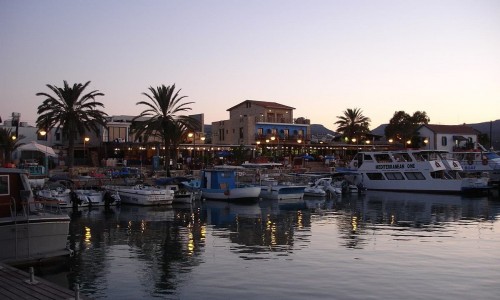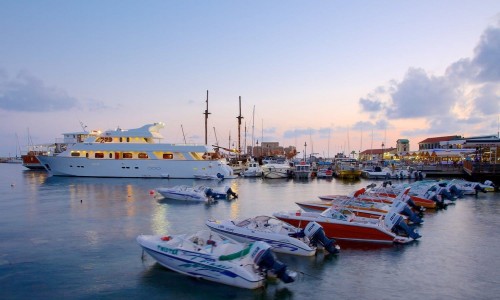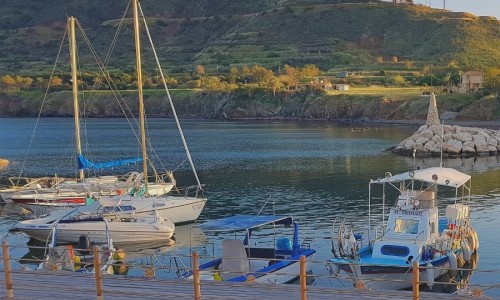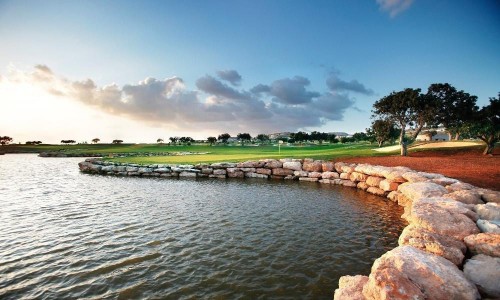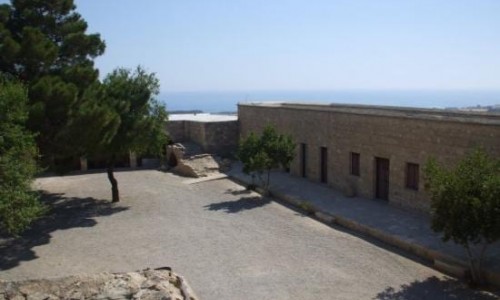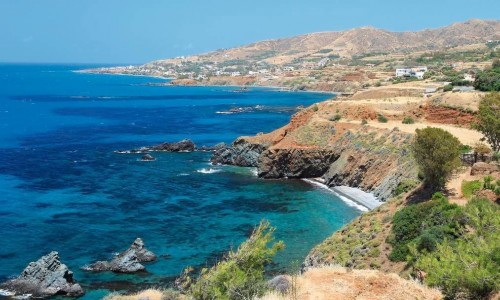Paphos Harbour
Nestled at the edge of the Mediterranean, Paphos Harbour is one of the most iconic and atmospheric locations in Cyprus. With its stone-paved promenade, crumbling medieval castle, and glittering waterfront, it offers a view not just of the sea, but of thousands of years of layered history.
Today, it draws everyone from strolling tourists to local fishermen, but beneath the cafés and souvenir shops lies a deep and compelling story—a story of ancient civilizations, maritime trade, sieges, earthquakes, and rebirth.
A Harbour Anchored in Antiquity
The harbour of Paphos—located in what is now called Kato Paphos—has been in use for over two thousand years. It was the main port of Nea Paphos, the capital of Roman Cyprus and a key node in the eastern Mediterranean's maritime network.
In ancient times, this small bay served as a vital link to Alexandria, Athens, Antioch, and Rome. Cargo ships arrived filled with wine, oil, marble, and amphorae, while Roman officials and early Christian missionaries disembarked here, leaving traces that still lie beneath the soil and stones.
Though modest in size, this harbour was once a centre of imperial administration and religious pilgrimage, especially for those seeking the sanctuary of Aphrodite at nearby Kouklia (ancient Palaipaphos).
Paphos Castle: Guardian of the Coast
Dominating the harbour is the Paphos Castle, a squat yet striking medieval fortress built originally by the Byzantines to guard against Arab raids. It was later rebuilt by the Lusignans, then dismantled by the Venetians, and finally reconstructed by the Ottomans in the 16th century after their conquest of the island.
The castle has served various roles over the centuries:
- Military outpost
- Prison
- Salt warehouse during British rule
- Cultural monument in modern times
Today, it stands as a stone sentinel, offering panoramic views from its rooftop and hosting concerts, art events, and the annual Paphos Aphrodite Festival, which transforms the medieval space into an opera stage under the stars.
The Promenade: Cafés, Crafts, and Sea Breezes
The waterfront promenade stretches out from the castle in both directions, lined with cafés, tavernas, ice cream parlours, and souvenir shops. It’s a place where Cypriot slow living meets the buzz of the tourist season.
- In the morning: the promenade is calm, perfect for a coffee with views of fishing boats returning with the morning catch.
- Midday: it becomes lively, with street performers, sunbathers, and boat tour vendors.
- At sunset: it takes on a golden glow, and diners gather at terrace tables as the sea breeze drifts in.
Despite its popularity, the harbour retains a certain unpretentious charm—not overbuilt, not over-polished. You can still see fishermen mending nets, kids chasing pigeons, and elderly locals sitting on benches as they have for decades.
The Harbour as a Cultural Stage
Throughout the year, the harbour transforms into a public stage for festivals and celebrations. Most notably:
- Paphos Aphrodite Festival: Held every September, it brings international opera performances to the open-air space beside the castle.
- Carnival & Kataklysmos (Festival of the Flood): These spring and early summer celebrations fill the harbour with music, folk dancing, water games, and fireworks.
- Christmas & Easter Markets: The area is decorated with lights, stalls, and community events, giving the harbour a festive glow.
These events highlight the harbour’s role as more than a scenic stop—it’s a living part of Paphos's cultural identity.
Gateway to the Archaeological Park
Just steps from the harbour lies the entrance to the UNESCO-listed Paphos Archaeological Park, one of Cyprus’s most important heritage sites. Within walking distance you can explore:
- The Houses of Dionysos, Theseus, Orpheus, and Aion, with some of the finest Roman mosaics in the Mediterranean.
- The ancient Agora and Odeon, once the beating heart of Nea Paphos.
- The remains of early Christian basilicas, tombs, and villas.
This proximity to ancient ruins gives the harbour an almost mythic feel—a sense that beneath every stone there’s another story waiting to be uncovered.
Boat Tours and Blue Horizons
Modern-day visitors can take advantage of the harbour’s maritime legacy through a range of boat tours, which include:
- Glass-bottom boat rides along the coast
- Sunset cruises with live music
- Excursions to Coral Bay, Akamas Peninsula, and Lara Beach
- Deep-sea fishing trips
For those not venturing far, just walking along the breakwater and watching the boats bob gently in their moorings offers a kind of peace that’s rare in tourist-heavy locations.
Eating by the Water: A Local Favorite
The harbour’s tavernas serve up a mix of traditional Cypriot cuisine and modern Mediterranean dishes. Look out for:
- Fresh grilled octopus or calamari
- Fish meze (a generous selection of seafood small plates)
- Lountza and halloumi in pita
- Icy Carlsberg or Keo beer, brewed locally
- Homemade loukoumades (honey-soaked dough balls) from nearby kiosks
Many establishments have been run by the same families for generations, offering not just food, but hospitality rooted in local pride.
Sunset and Memory
Perhaps the most unforgettable experience at Paphos Harbour is simply watching the sun dip behind the castle and the fishing boats, casting long shadows over the calm waters. The sea turns molten gold, the breeze softens, and time seems to slow.
For a few minutes, everything feels suspended—history, nature, and the human moment converging in quiet harmony.
Paphos Harbour is one of those rare places that balances beauty, authenticity, and accessibility. While it certainly looks good in photos, its magic goes deeper than aesthetics.
It’s a place of arrivals and departures, of stories layered in stone and sea, of gods and empires, villagers and visionaries. It’s a place where you can walk with the ancients in the morning, sip coffee in the afternoon, and watch the stars over castle walls at night.
Whether you're a curious traveler, a history enthusiast, or just someone in search of a perfect view, Paphos Harbour is Cyprus at its most evocative.
Practical Information
- Location: Kato Paphos, easily accessible from the seafront hotels and Paphos Old Town by foot or local bus.
- Best Time to Visit: Early morning for tranquility, late afternoon for golden light and cooler temperatures.
- Nearby Attractions: Paphos Archaeological Park, Agia Kyriaki Church and St. Paul’s Pillar, the Castle, the Hellenistic Theatre.
- Boat Tours: Available all day; inquire at the kiosks along the promenade.
- Dining Tip: Try a fish meze at a locally owned taverna and ask what’s fresh that day.






